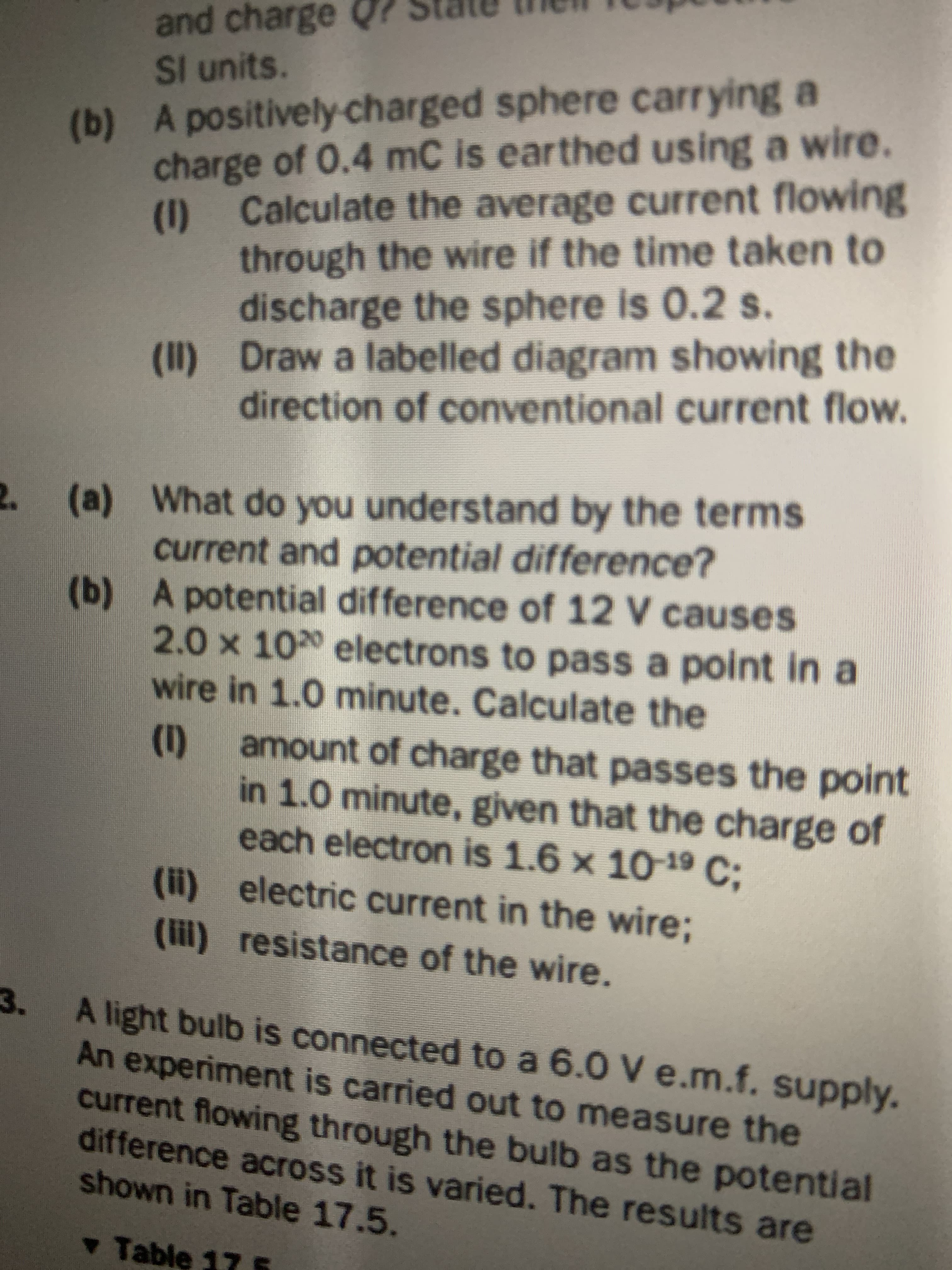A positively charged sphere cartyIng charge of 0.4 mC is earthed using a wire. (1) Calculate the average current flowing through the wire if the time taken to discharge the sphere is 0.2 s. (II) Draw a labelled diagram showing the direction of conventional current flow.
A positively charged sphere cartyIng charge of 0.4 mC is earthed using a wire. (1) Calculate the average current flowing through the wire if the time taken to discharge the sphere is 0.2 s. (II) Draw a labelled diagram showing the direction of conventional current flow.
Chapter7: Electricity
Section: Chapter Questions
Problem 26Q: (Indicates a review question, which means it requires only a basic understanding of the material to...
Related questions
Question
number 1b and 2b

Transcribed Image Text:and charge
Sl units.
(b) A positivelycharged sphere carrying a
charge of 0.4 mC is earthed using a wire.
(1) Calculate the average current flowing
through the wire if the time taken to
discharge the sphere is 0.2 s.
(II) Draw a labelled diagram showing the
direction of conventional current flow.
(a) What do you understand by the terms
current and potential difference?
(b) A potential difference of 12 V causes
2.0 x 100 electrons to pass a point in a
wire in 1.0 minute. Calculate the
(1)
amount of charge that passes the point
in 1.0 minute, given that the charge of
each electron is 1.6 x 10-19 C;
(ii) electric current in the wire;
(ii) resistance of the wire.
3.
A light bulb is connected to a 6.0 V e.m.f. supply.
An experiment is carried out to measure the
current flowing through the bulb as the potential
difference across it is varied. The results are
shown in Table 17.5.
Table
17 E
Expert Solution
This question has been solved!
Explore an expertly crafted, step-by-step solution for a thorough understanding of key concepts.
Step by step
Solved in 3 steps with 1 images

Knowledge Booster
Learn more about
Need a deep-dive on the concept behind this application? Look no further. Learn more about this topic, physics and related others by exploring similar questions and additional content below.Recommended textbooks for you


Physics for Scientists and Engineers: Foundations…
Physics
ISBN:
9781133939146
Author:
Katz, Debora M.
Publisher:
Cengage Learning


Physics for Scientists and Engineers: Foundations…
Physics
ISBN:
9781133939146
Author:
Katz, Debora M.
Publisher:
Cengage Learning